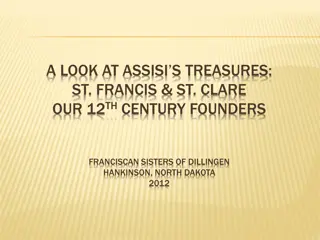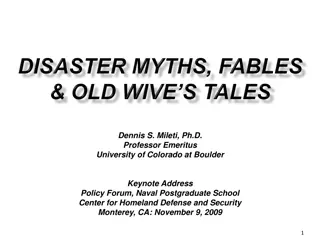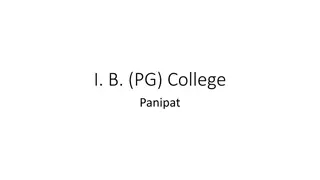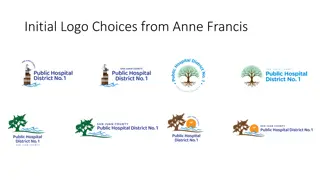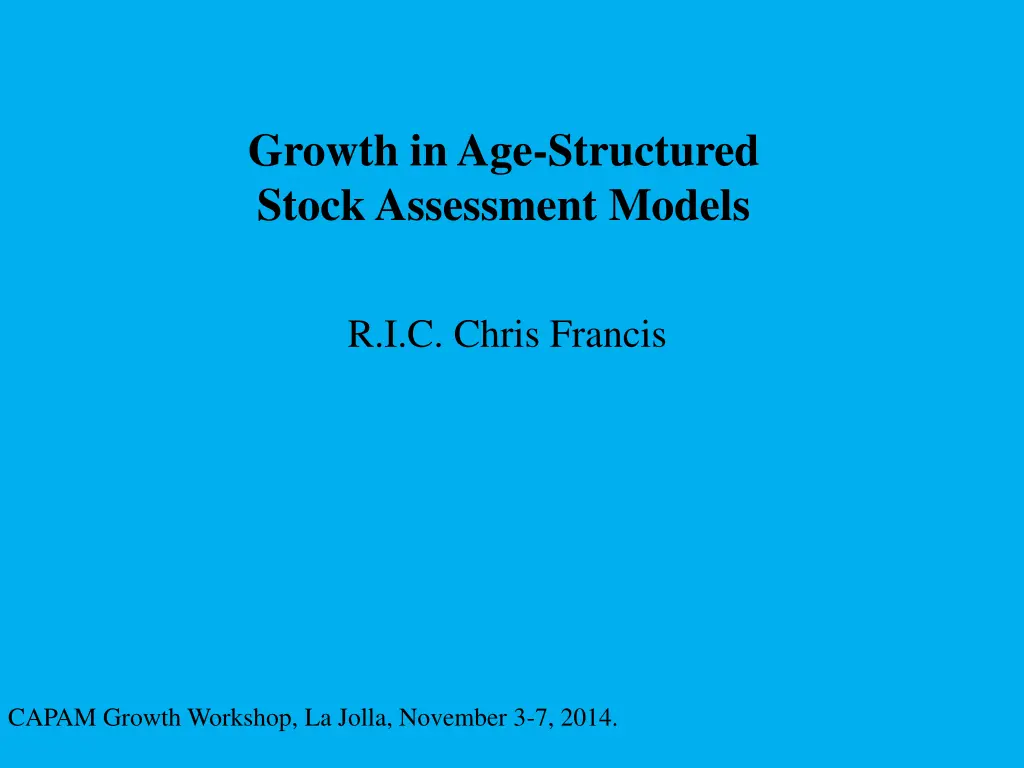
Growth in Stock Assessment Models
Explore the key aspects of growth in age-structured stock assessment models, the differences between age-structured and length-structured models, and the various approaches and programs used in stock assessment. Learn about the elements and specifications of growth models, including the estimation process and functions involved.
Download Presentation

Please find below an Image/Link to download the presentation.
The content on the website is provided AS IS for your information and personal use only. It may not be sold, licensed, or shared on other websites without obtaining consent from the author. If you encounter any issues during the download, it is possible that the publisher has removed the file from their server.
You are allowed to download the files provided on this website for personal or commercial use, subject to the condition that they are used lawfully. All files are the property of their respective owners.
The content on the website is provided AS IS for your information and personal use only. It may not be sold, licensed, or shared on other websites without obtaining consent from the author.
E N D
Presentation Transcript
Growth in Age-Structured Stock Assessment Models R.I.C. Chris Francis CAPAM Growth Workshop, La Jolla, November 3-7, 2014.
Age-structured vs Length-structured Model type age-structured length-structured Population state at any time number of fish in each age class number of fish in each length class Both types of model may also record fish numbers by sex, area, stock, ... Important difference: - age-structured models may know about length - length-structured models don t know about age
Eight Stock Assessment Programs AMAK ASAP BAM CASAL Coleraine iSCAM MFCL (Multifan-CL) SS (Stock Synthesis) https://github.com/NMFS-toolbox/AMAK Legault & Restrepo (1999) Craig (2012) Bull et al. (2012) Hilborn et al. (2013) Martell (2014) Kleiber et al. (2013) Methot & Wetzel (2013)
Two Approaches to Growth 1. Ignoring fish length - growth information: matrices of mean-weight-at-age by year (separate matrices for catch, SSB, survey, etc) - used by AMAK and ASAP - reasonable for assessments without length data 2. Using fish length Model relationships between - length and weight (typically W = L ) - age and length the growth model
Three Aspects of the Growth Model Specification Estimation Function
Specification: 1. Mean length at age Either parametric (e.g., von Bertalanffy, Richards) can be estimated inside or outside the model or empirical (mean length at age by year) estimated outside the model Extended parametric growth models - separate parameters for some initial ages (MFCL) - age-specific K (SS)
Specification: 2. Variation of length at age Assumption Comment Distribution Variance normal lognormal most common quite similar to normal Variance = 0 CV(L) = a + b ? SD(L) = a + b ? CV(L) = a + bA SD(L) = a + bA SD(L) = a exp(b ?) OK if no length comps most common ( usual ) implausible for older fish? implausible for older fish? MFCL - intriguing!
Variation of Growth Growth models may differ by - sex (common) - area & season of recruitment (SS) ( growth morphs ) - stock (CASAL) - density (MFCL) - time (SS) - phenotype (SS and CASAL) see below
Estimation of Growth The parameters of the growth model may be estimated - outside the model, or - inside the model Which is best? Historical trend is towards inside (consistent with philosophy of integrated models)
Observations to Estimate Growth Parameters 1. age-length - often used outside the model (treated as random at age) - inside the model - in SS (treated as random at length) - in CASAL (several treatments) 2. length compositions - outside the model with Multifan, etc - inside the model (many programs) 3. tagging length increments - inside the model (CASAL) - problem of age- and length-based growth (Wednesday talk)
Functions of the growth model 1. To calculate biomass from numbers at age age length weight 2. To convert length-based fishery selectivities to age-based in order to remove the catch 3. To calculate likelihoods of length-related observations
Relevance of selectivity All sampling methods are biased because The size and age of fish caught depends on - the gear used - the time and place of fishing
Selectivity in stock assessment models Each set of observations has an associated selectivity curve - accounts for gear-based selectivity and fish distribution Selectivities may be - age-based (all models) - length-based (many models) - product of age- and length-based (SS) Length-based often now deemed to be more realistic - implies that age-length data are random at length - biases growth curves estimated outside the model
Ontogenetic Migration of Red Drum (data courtesy of Robert Muller) Red drum migration is age-based Migration at ages 3 & 4
Consequences We should be cautious about the assumptions that - selectivity is purely length-based - age-length data should be treated as random at length Age distributions of red drum of length 750-850 mm 2 3 4 5 6 7 8 9 ESTUARY 1 20 10 2 1 0 0 0 OFFSHORE 0 5 40 43 22 23 2 2
Growth variation by phenotype Population divided into subpopulations, each with its own growth model Terminology: - sub-morphs (SS User Manual) - platoons (Taylor & Methot, 2013 for SS) - growth paths (CASAL) Potential solution to a problem with length-based selectivity
Comments on phenotype growth Seems like a good idea, but the jury s still out Potential weaknesses - Assumes growth variation is genetic, rather than environmental - Allows no genetic selection - Ignores density-dependent growth For more detail see Taylor & Methot (Can. J. Fish. Aquatic Sci. 142: 75-85, 2013)
Inferring Growth from Length Comps In practice - modes for youngest age classes are often erratic - many length comps are unimodal
A unimodal length comp M = F = 0.2
Use of Age-Length Keys (ALKs) ALK age-length data set, treated as random at length Traditional approach Outside model - use ALKs to convert length comps to age comps - estimate growth pars New approach (in SS) Outside model Inside model - fix growth pars - fit to age comps only Inside model - estimate growth pars - fit to length comps and ALKs
Pros and Cons of New Approach Pros - more consistent with philosophy of integrated models - should get better estimates of growth - don't need complete ALKs Con - possible loss of information in fitting length comps (because each expected length comp is calculated using the growth model, not the corresponding ALK) Conclusion: be cautious about new approach when growth varies by year
Guidelines for Choosing the Best (Growth) Model (including which parameters to estimate inside the model) 1. There are no fixed rules 2. Be guided by your data (including qualitative/anecdotal) 3. See what works (try alternative models) 4. Start simple & use Occam s Razor
Evaluating Alternative (Growth) Models Look for - A visible improvement in goodness of fit - A non-trivial change in stock status (e.g., SSB trajectory) Don t use AIC! (almost always favours more parameters)









